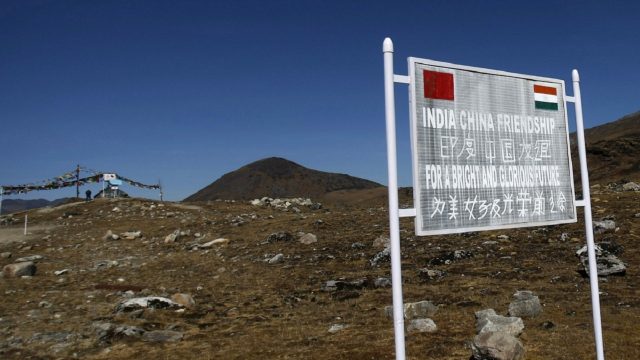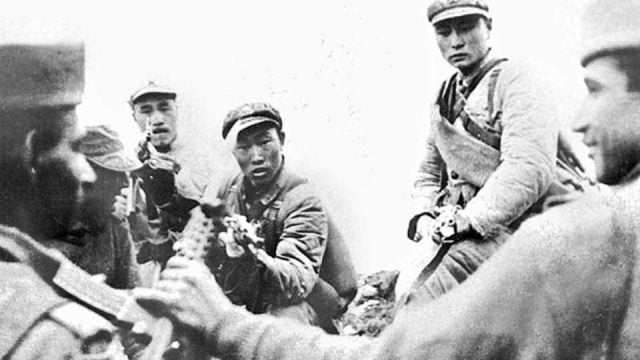Demystifier: ED Original where the content is written in such a way that it is knowledgeable and easy to comprehend at the same time.
Why is the India-China Border Suddenly in News?

The India-China scuffle has always been a contentious issue in bilateral talks between the two countries. Recent skirmishes have come into limelight because India opposed China’s attempt to build a road through a plateau called Doklam in India.
Although the road falls in Bhutan’s area, Delhi has decided to block Chinese troops from building the road, which could potentially wreak havoc as China would end up having greater access to India’s “chicken neck”, a 20 km wide corridor that links the seven northeastern states to it. In addition to this, Bhutan maintains its diplomatic relations with China through Delhi.
To this, Beijing responded by shutting down the Nathu La Pass for entry of Indian pilgrims for Kailash Mansarovar Yatra. The Mansarovar lake is a holy Hindu site and there is a formal agreement between the neighbors to allow devotees to visit.
This particular incident is also significant as Sikkim is the only state in India with a demarcated border along China. Sikkim became a part of India in 1975, and the border issue was settled using the Anglo-Chinese Convention of 1890, a 127-year-old treaty between the Qing Empire and Great Britain.
Why does the India-China Conflict Exist in the First Place?
It is the McMohan Line that separates India from China. However, since the treaty was signed by the British with Tibet in 1914, China did not accept its legality.
Chinese communists were quick to rebuff all existing borders decided by the British and decided to pave their own ones.
Border conflicts date back to the 1950s, up until when Delhi had conveniently ignored China’s version of maps. Maps that were published in 1954 by Beijing showed the Northeastern edge of Jammu and Kashmir (the Aksai Chin region) as Chinese territory.
Nehru did have a dialogue with the then Chinese premier, Zhou Enlai in relation to this. He exchanged a memo with the Premier discussing the borders in 1955, which the Chinese government completely refused and labelled it with many faults.
This, coupled with the refuge of The Dalai Lama, when he fled to India in 1959, further deepened tensions between the two countries.
Read More: 5 Times China Cunningly Betrayed India
What Went Wrong in 1962?

1962 could be said as an impending disaster that India overlooked. There was a diplomatic error made by Nehru, who failed to arrive at a solution with China from the very beginning.
Military unpreparedness, mixed with an unexpected attack, where a few Indian troops were left to the mercy of 3 belligerent regiments, led to a humiliating defeat. Critics cite India’s decision to not use the Air Force as another error in judgment.
The dispute in 1962 was primarily because of The Aksai Chin region. This region was of utmost importance to China as it joined the Tibet and Sinkiang provinces of China thus providing a direct geographical continuity. China perceived India as a threat, and the 1962 Sino-India war happened.
What happened in 1967?
While the 1962 war remains a landmark in India’s history, it is the 1967 war that gave China a befitting reply. Apparently, China wanted India to vacate Sikkim as it was a procreate state i.e. meant to be protected from enemy aggression. Indian Army, under the leadership of the 3 commanders who lead India in the 1971 war as well, decided to demarcate the border by laying a wire. China, in kiddish retaliation to this, started firing at the Indian soldiers without a warning. However, to their utmost horror, India had deployed 2 grenadiers and artillery earlier. Chinese bunkers were destroyed, and Beijing devastated.
China didn’t forget this, and a month after got into minor scuffles. These minor scuffles turned into a fierce gun battle which continued for 10 days. Since this war, not a shot has been fired from either of the sides.
What is the current status of both countries?
Tensions have flared frequently since, the recent one coinciding with Modi’s visit to the U.S. China, which has an uneasy relation with the U.S lately, is not a huge supporter of the growing ties between India and U.S.
The Chinese media has gone so far as to report that if Indian troops do not retreat from the disputed area, serious consequences-even war could follow. It’s almost laughable coming from a country which ranks 176 in the World Press Freedom Index 2017, out of the 180 countries evaluated.
In my opinion, India and China need to come to an agreement to end the tussle soon. Both countries are developing nations with huge populations, and therefore need to focus on internal conflicts. It’s about time China stopped meddling into all border disputes.
Image Credits: Google Images
Other Recommendations:
http://edtimes.in/2017/03/indo-chinese-relationship-can-never-friends/

































